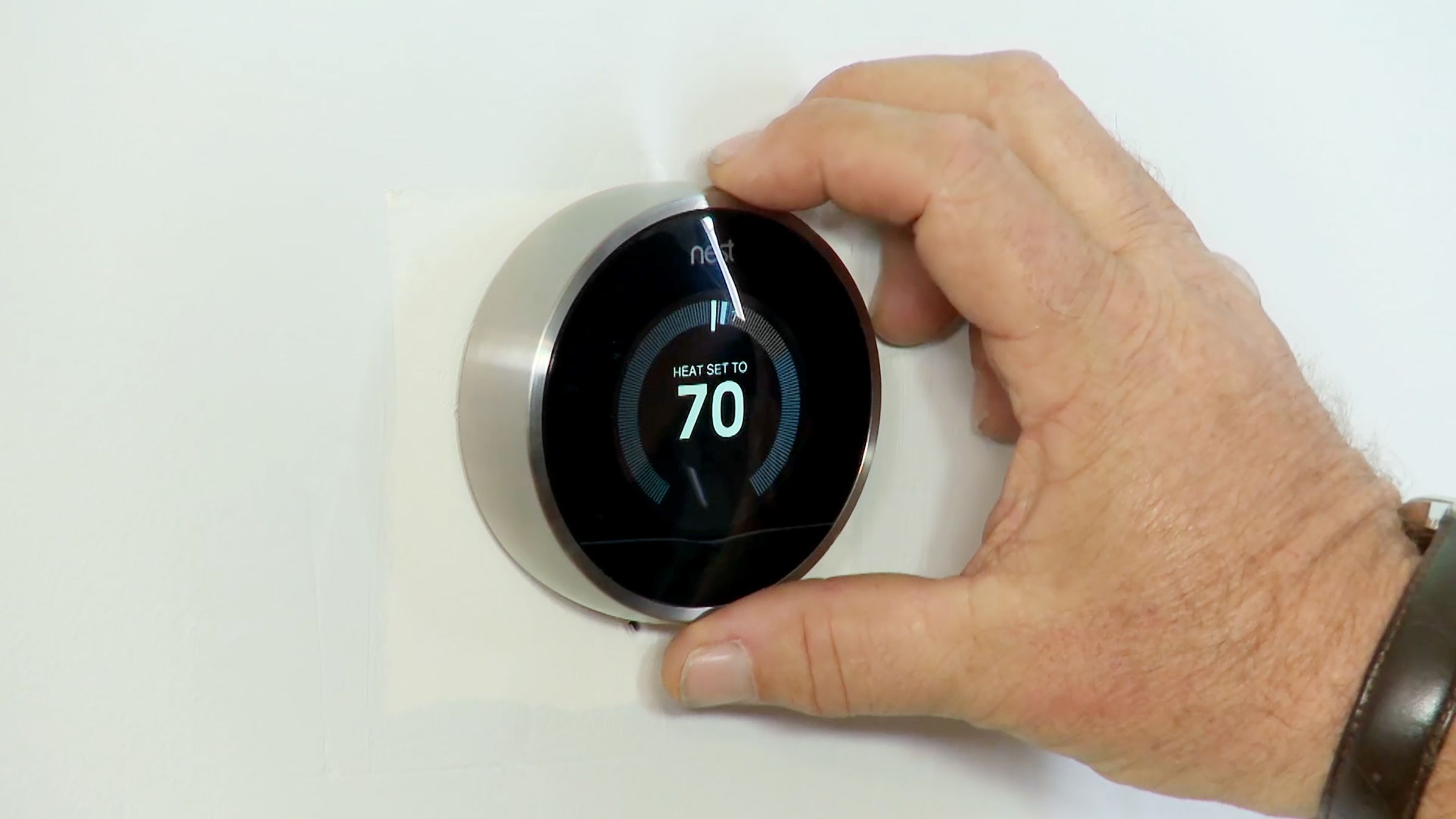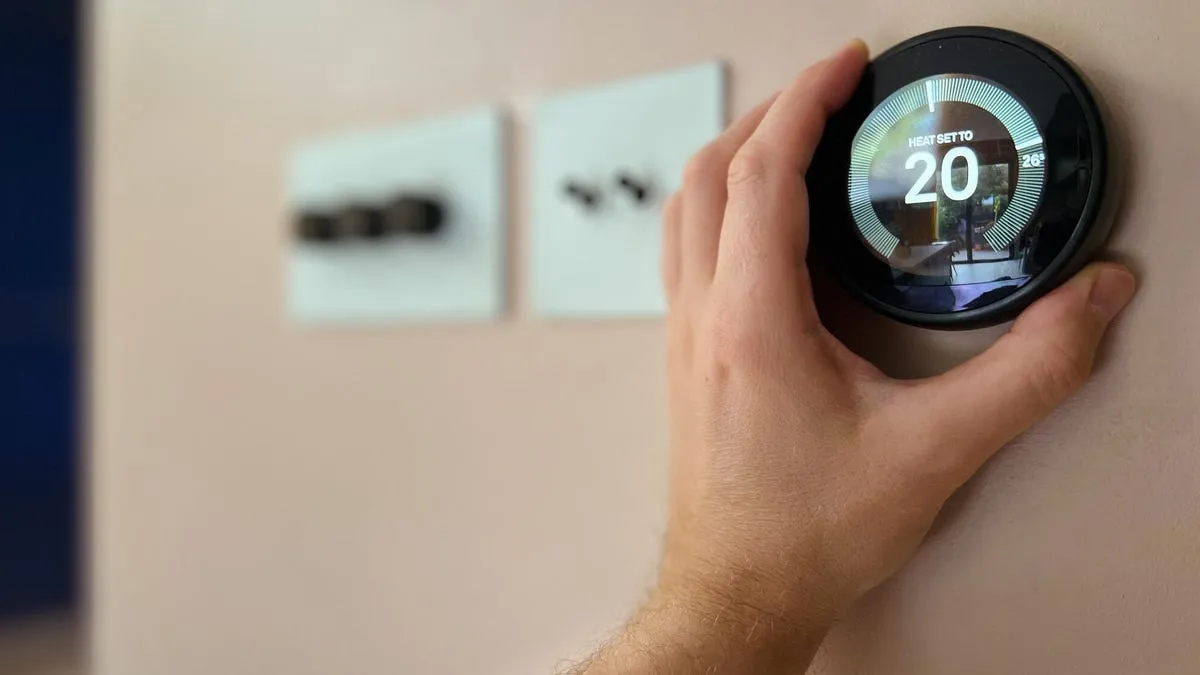Making changes around the house can sometimes feel like a lot of work, especially when it involves devices that seem technical. Many homeowners across the United States are now showing interest in smart thermostats, which are electronic tools designed to manage heating and cooling in a modern way.
These devices are replacing the traditional thermostats that usually require manual adjustments. With more conversations surrounding home energy use and monthly utility bills, smart thermostats have gained attention as something worth considering.
Some households are looking for ways to reduce electricity consumption while keeping the temperature at a comfortable level. Others are simply drawn to the idea of modern convenience.

Manage your home’s temperature whether you’re in bed or abroad (Photo: Getty Images)
While these gadgets appear to offer comfort and control, the decision to get one often depends on more than just liking new technology. People usually weigh the potential cost savings against the amount spent on purchase and installation. There is also interest in understanding how these devices work, how reliable they are, and whether they really make daily life easier.
Let us take a closer look at what makes smart thermostats different, how they function, and whether it makes sense to invest in one in 2025.
How Smart Thermostats Operate
Smart thermostats allow users to adjust their home’s temperature using apps on smartphones or tablets. Many of these devices learn your daily routines over time and can adjust automatically based on your preferences.
For example, if you usually leave your house at 8 a.m. and return at 6 p.m., the thermostat can reduce heating or cooling during that time and resume operations before you get back. Some models come with motion sensors or use your phone’s location to detect whether you are at home.
Voice control is another common feature, allowing users to make adjustments through smart speakers or voice assistants like Alexa and Google Assistant. In situations where people forget to adjust the temperature manually, these voice or app-enabled features can be useful. Most models also provide usage reports, so homeowners can view their patterns and make adjustments if needed.
What stands out about these devices is that they allow for remote control. Whether you are at the office or on holiday, you can still monitor your home’s heating and cooling systems from your phone. This means no more worrying about whether you left the heater running after leaving the house.
Energy Efficiency and Lower Utility Bills
One major reason people are drawn to smart thermostats is the chance to reduce their electricity or gas bills. Traditional thermostats often maintain the same temperature all day unless you adjust them manually.
That kind of constant energy use can lead to waste, especially if no one is home for long hours. Smart thermostats try to solve that by adjusting according to time, occupancy, and weather patterns.
Some utility companies also offer rebates or discounts for customers who install energy-saving devices like smart thermostats. Although the amount varies depending on where you live, it often helps reduce the initial cost. Over time, homeowners might see a difference in their energy bills, especially in homes with heating and cooling systems that operate frequently.
It is important to mention that the level of savings depends on how the thermostat is used. If someone constantly overrides automatic settings or keeps the home at extreme temperatures, the device might not help reduce costs as much as expected.
Installation and Compatibility
Installing a smart thermostat is usually straightforward for someone who has basic knowledge of home devices. Many models come with clear instructions, and the process often takes less than an hour.
However, not every home heating or cooling system works with all thermostat models. Some homes might have systems that require extra wiring or a special adapter.
If someone is unsure about compatibility, it might be better to contact a professional technician. While this adds to the cost, it can prevent damage or connection problems later. Some homeowners also prefer having an expert handle the job, especially when it involves electric or gas systems.
It is also wise to check whether the thermostat works with your home assistant devices before making a purchase. Compatibility with your current setup can determine how much you enjoy using the smart features.
Smart Features and Added Comfort
Aside from energy savings, smart thermostats offer a more convenient way to control your indoor temperature. With learning features, some models adjust the settings gradually, so users do not need to programme anything. Over time, the device creates a schedule that fits your daily habits, making it easier to maintain a comfortable space without doing much.
Weather adjustments are also part of what these thermostats offer. If a heatwave or cold front is coming, some models adjust ahead of time to keep the house at a steady temperature. This removes the need for manual changes whenever the weather shifts.
Another useful feature is zoning. In homes that have more than one zone for heating or cooling, some thermostats allow different rooms to maintain different temperatures. This helps in houses where people have different comfort levels or in cases where one room gets warmer than another.
Security and Data Protection
Because these thermostats are connected to the internet, questions about privacy and data security often come up. Most manufacturers now use encryption to protect user data and offer updates to fix any possible weakness. Still, it is a good idea to keep your device’s software updated and to use strong passwords for your accounts.
Homeowners who are concerned about privacy should also review the settings on their mobile apps. Turning off location tracking or limiting access permissions can help you stay in control of your data. Even though these devices are helpful, it is important to remain aware of how your information is handled.
Who Benefits the Most
Smart thermostats can be a helpful tool for various types of homeowners. People with steady daily routines, for example, may benefit because the device can adjust based on their schedules. Those who travel frequently or spend long hours outside the house also gain from remote access and automatic settings.

Modern heating meets energy savings with just a few taps (Photo: Shutterstock)
On the other hand, someone who stays home most of the time or who enjoys changing settings manually might not find the features necessary. Also, people living in areas with mild weather where heating and cooling systems are used less often may not see a strong difference in their bills.
Still, the ease of control and the comfort they bring can be a reason to consider them, even for those who do not expect large savings.
Upfront Cost and Long-Term Value
Smart thermostats come in a range of prices, depending on the brand and the features. Some basic models cost under $100, while more advanced options can be over $250.
The initial cost might seem high, especially when compared to traditional models. However, when the monthly savings begin to add up, the price starts to make more sense over time.
Buyers should consider both the features and the long-term value when choosing which model to buy. Sometimes paying a little extra brings more comfort, better controls, and compatibility with other home systems.
People who want more control over their home’s temperature while trying to manage energy use may find smart thermostats useful. They offer flexibility, automation, and a sense of modern living that traditional models cannot provide.
While they may not be necessary for every household, those who spend time away from home, appreciate convenience, or enjoy smart devices may see real value in them.
As 2025 continues, more homes are expected to use devices like these. Those thinking about upgrading might want to look at how often they use their heating or cooling systems, their current energy bills, and how much they value convenience. With the right model, a smart thermostat can improve daily comfort while helping to reduce energy use.
























